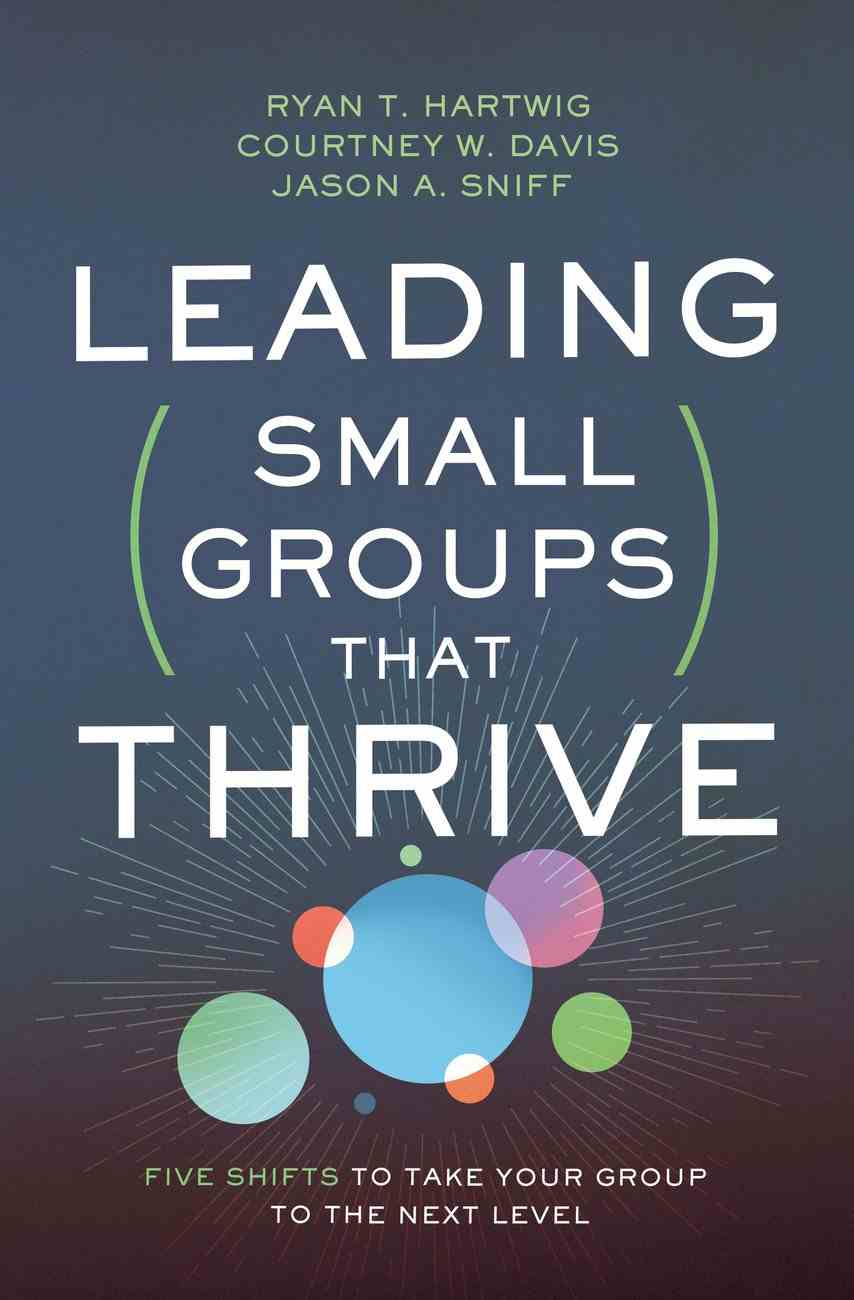I have an unfortunate tendency to avoid reading books that might shine a light on my ministry weaknesses. I’m like a patient who avoids the doctor because he’d rather live with his problems than confront them. So while I’m responsible for my church’s small-group strategy I haven’t read as many books as I could have.
I heard the voice of God telling me to stop being stupid and start being open to discipline and correction.
During the pandemic I learned two things that helped me to read books that challenge me. First, I grew in my self-knowledge and realized that my fear of criticism was a symptom of perfectionism. This needed to be overcome. Second, I re-read the book of Proverbs. Proverbs 12:1 (NIV) says: “Whoever loves discipline loves knowledge, but whoever hates correction is stupid”. This was confronting. I heard the voice of God telling me to stop being stupid and start being open to discipline and correction. When I heard about a new book on small-group ministry I bought it, girded my loins and read it through.

Leading Small Groups That Thrive: Five Shifts to Take Your Group to the next Level
Leading Small Groups That Thrive: Five Shifts to Take Your Group to the next Level
The book is Leading Small Groups That Thrive: Five Shifts to Take Your Group to the next Level by Ryan T. Hartwig, Courtney W. Davis and Jason A. Sniff.[1] Hartwig is professor of communication at Colorado Christian University, Davis is associate professor of communication management at Azusa Pacific University, and Sniff is pastor of small-groups at Eastview Christian Church in Normal, Illinois. They pull together secular wisdom, research, and ministry experience to develop a cohesive strategy for Leading Small Groups.
The research, which was supported by a grant from Azusa Pacific University, was a quantitative survey of 90 small-group pastors, 135 small-group leaders and 825 small-group members.[2] The survey covered areas such as the spiritual health of members, how the group used its time, what pastors looked for in leaders and other aspects of small-group life. The authors followed up the survey with site visits and interviews with some of the top-rated groups among those they surveyed.[3]
The data means that this book is more than one person’s stories and thoughts about their experience in ministry. I’ve read a few books like this, and some of them have helped me. But I’m often not sure that I will be able to make the same choices as one other person has made a few times and also see the results they’ve seen. Leading Small Groups That Thrive, on the other hand, has ideas and wisdom for churches of many types and in many places.
Overview
The first three chapters each cover a big question that small-group leaders can learn from.
Chapter 1: What’s the Big Deal about Groups? Casting a Powerful Vision for Groups
Chapter 2: What does a Catalytic Leader Do? Painting a Picture of Next-Level Group Leadership
Chapter 3: How Do I Get Where I Want to Go? Mapping a Plan to Develop a Thriving Group
As they answer these questions the authors explain why small-groups are so important and why they are so dependent on effective or, (in their words) “next level” leadership. “Catalytic” is an adjective the authors use frequently for leaders and leadership. They don’t define it, but they use it as if it means helping people to become more spiritually healthy. They do share a quote about leadership from Christian author Howie Hendricks: “Your measure as a leader is not what you do, but what others do because of what you do”.[4]
Chapter three outlines the five shifts that need to happen in a new group (or any group) for it to thrive. These shifts are then covered in more detail in the next five chapters:
Chapter 4. Confused to Compelling: Energize Your Group by Articulating Your Purpose
Chapter 5. Disengaged to Dedicated: Set the Stage to Keep People Coming Back
Chapter 6. Mine to Ours: Cultivate Commitment through Shared Ownership
Chapter 7. Trivial to Transformative: Stimulate Meaningful Discussions
Chapter 8. Avoidance to Embrace: Engage Difficult Conversations without Destroying Your Group
These five chapters form the middle of the book and draw heavily on the research. Many people have heard of psychologist Bruce Tuckman’s stages of group development: forming, storming, norming and performing. The authors explain how groups can go through a similar process from uncertainty and superficiality to enthusiastic commitment and transformation.
The final section of the book is about how leaders can expand and sustain their influence within and beyond the group:
Chapter 9. Your Care: Cultivating and Sustaining Your Own Health
Chapter 10. Your Legacy: Recruiting and Raising Up New Leaders
Chapter 11. Your Charge: Expanding and Multiplying Groups
The book concludes with suggestions for next steps and further resources.
Strengths of the Book
There are many things I appreciate about Leading Small Groups That Thrive. I suspect this will be an influential book in small-group ministry for a long time. It certainly met my hopes for something that would discipline and correct me as per Proverbs 12:1. I’d like to highlight three things I particularly benefitted from.
First, each chapter contains at least a couple of very interesting research results. For example:
- Groups that spend more time on logistics experience more spiritual growth.[5]
- The more time a group spends in prayer, the less a group contributes to its members’ spiritual growth. In contrast, the more time the leader spends in prayer, the more the group contributes to spiritual growth.[6]
- The most effective groups were either small (fewer than eight members) or big (more than seventeen members).[7]
- Groups that had been meeting for less than three months contributed the most to individual spiritual growth.[8]
These points and others like them got me thinking about how I lead groups and how I lead the small-group ministry at our church. I’m thinking about using groups’ church roster commitments to build stronger relationships. I’ve started to wonder if should I devote more time to encouraging the prayer life of our small-group leaders. I’m also thinking about whether our groups are too big, and if I should be trying to launch more groups. I’ve asked our small-group ministry leaders to read the book so we can talk about these questions.
Even spiritual growth is not an ideal purpose in itself. An external purpose such as evangelism or ministry is a better purpose.
Second, the chapter on group purpose is particularly stimulating and helpful. The authors stress the importance of having a clear and clearly stated purpose for your small-group. Ryan Hartwig shares a story about a church who asked him for help improving their small-group ministry. He found at least three different and conflicting purpose statements on the church’s website, leader application form and leader guide. I wondered what he would find at my church or other similar Australian churches.
The authors argue that community should not be the primary purpose of groups. In their words: “Whatever you do, don’t tell people the primary purpose of your group is solely to build or be in community”.[9] According to their research, community focused groups experience less spiritual growth than groups that have some kind of external purpose in addition to community. This advice is similar to what Colin Marshall taught way back in the 1995 classic Growth Groups: “If community has become the goal, the small-group has become the end rather than the means”.[10]
The authors argue that even spiritual growth is not an ideal purpose in itself. An external purpose such as evangelism or ministry is a better purpose. The process of pursuing it will create a thriving group. They explain it this way:
Even though both pastors and small-group leaders generally listed fellowship and discipleship as their top priorities, our data showed that groups that focused on other purposes demonstrated a greater contribution to spiritual growth. For instance, groups that prioritized ministry, evangelism, worship and assimilation contributed more to their members’ spiritual health than other groups. Oddly, groups that placed a relatively low priority on discipleship also contributed more to their members’ spiritual growth.[11]
This got me thinking. In an effort to clarify our groups’ purpose and promote other evangelistic strategies at church, have I neglected to elevate evangelism as a significant purpose in our groups?
A third highlight of the book was the emphasis on leaders raising up other leaders who launch new groups (chapters ten and eleven). The authors stress that this sort of growth is good, both for leaders and groups: “Our data was beautifully clear here: groups that had multiplied were healthier than groups that had not yet multiplied.”[12] I know my tendency as a pastor is to hold on to the responsibility of leader development. I’m not good at delegating. These chapters challenged me to equip and empower leaders themselves to train more leaders and multiply groups.
Some (minor) Weaknesses
I’m reluctant to mention any weaknesses of the book since it is so helpful and has given me so much to reflect on. I do see a couple of things to consider as we read and recommend the book in our own ministries.
First, the arguments of the book are mostly based on research and experience rather than Scripture. Research and experience are valuable and the fact that they are used is not a problem in itself. But anyone who reads this book should ask themselves if it’s consistent with Scripture on the topics it covers. Some parts of the book would be better if they gave more consideration to what Scripture says about the topic. Thus, in the chapter on group purpose (which I found so helpful), the strategy for determining group purpose was a bit too open. The authors say: “So, who determines a group’s purpose? You, the leader, through conversation with group members.”[13] I think I’d like to work hard at reading the Bible to try and figure out what the purpose of a Christian group should be according to God.
Growth Groups by Colin Marshall or the training course The Small-group and the Vine by Tony Payne and Marty Sweeney do a great job of listening to what the Bible says about small-groups.[14] They spend time in Colossians examining what God’s purposes are in the world and how they are expressed in Christian small-groups. These resources would complement Leading Small Groups That Thrive really well.
A second weakness, especially in terms of using the book in small-group ministry, is that it could feel a bit overwhelming for group leaders. Many leaders struggle to read books and at over 200 pages with dozens of questions for reflection, Leading Small Groups That Thrive might, unfortunately, not get read. It is well written and useful so I think that people who give it a chance will want to finish it. Perhaps small-group pastors could turn some of the content into training exercises and shorter articles to help leaders.
The third weakness is a little harder for me to put my finger on. I would have liked to have seen more emphasis on the sovereignty of God in ministry, serving in weakness and depending on God in prayer. These themes were all present in the book but they were not prominent. Leaders who read the book may either become overconfident in their own ability to succeed or become discouraged by their own weaknesses. These risks could be dealt with by regularly reminding leaders of these themes as we use the book in teaching and training.
Conclusion
Proverbs is right. I was better off opening my ministry to correction than ignoring advice. Leading Small Groups That Thrive is an excellent book and I’m looking forward to discussing it with my colleagues and small-group leaders and putting many recommendations into practice. I would encourage anyone involved in small-group ministry to read it, especially pastors and small-group ministry overseers. It would be a great blessing if the small-group ministries at our churches thrived. This book will help leaders make that happen.
[1] Ryan T. Hartwig, Courtney W. Davis, Jason A. Sniff, Leading Small Groups that Thrive: Five Shifts to Take Your Small Group to the Next Level, (Grand Rapids, Michigan; Zondervan Reflective, 2020).
[2] The research is explained in Appendix C in Ibid., pp. 234-239.
[3] Ibid., pp. 234-39.
[4] Ibid., p. 17.
[5] Ibid., p. xix.
[6] Ibid., p. 169.
[7] Ibid., pp. 80-82
[8] Ibid., p. 202.
[9] Ibid., p. 62.
[10] Colin Marshall, Growth Groups, (Kingsford, NSW; Matthias Media, 1995), p. 28.
[11] Leading Small Groups That Thrive., p. 56.
[12] Ibid., p. 202.
[13] Ibid., p. 56.
[14] Tony Payne and Marty Sweeney, The Small Group and the Vine: Foundational Training for Group Leaders, (Matthias Media, 2018).














